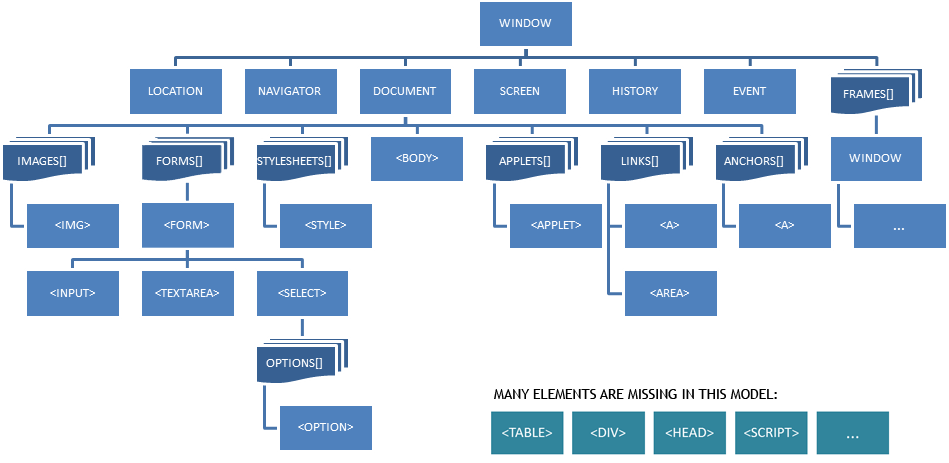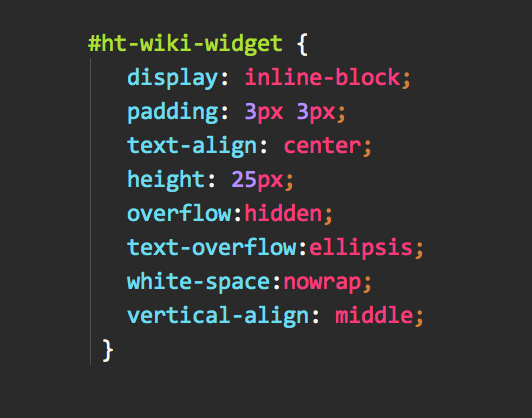Group Study at Sharptop
Session 2
Code of Conduct
Document Object Model

CSS Selectors


Selector Examples
.something
#something
<div class="something"> </div>
<div id="something"> </div>.something[data-id=2]
<div class="something" data-id="2"> </div>something
<something> </something>.something[data-type^="col-xs"]
<div class="something" class="col-xs-8"> </div>div:first-child
<div class="something">
<div> Item One </div>
<div> Item Two </div>
</div>.something a
<div class="something">
<a href="#"> One </a>
<a href="#"> Two </a>
<div>
<a href="#"> Three </a>
</div>
</div>Child Selectors
.something > a
Read all about it:
#something.else
<div id="something" class="else">
<a href="#"> One </a>
<a href="#"> Two </a>
<div class="else">
<a href="#"> Three </a>
</div>
</div>Multiple Selectors
#something .else
Read all about it:
Specificity
or "Why is Ma CSS Not Working?"
<div id="something" class="else">
<a href="#"> One </a>
<a href="#"> Two </a>
<div class="else">
<a href="#"> Three </a>
</div>
</div>Read all about it:
https://developer.mozilla.org/en-US/docs/Web/CSS/Specificity
div#something a { border: 1px solid #ccc; }
a { border: 1px dotted #ccc; }
div a { border: 1px dashed #ccc; }Scope
CSS is too cool for scope, you peasants need to worry about it!
Be specific about your classes
.box { border-color: blue; }
/* vs. */
#home .box-blue { border-color : blue; }
Scope it yourself
.myapp-box-blue { border-color : blue; }
Remember specificity
Basic jQuery
"It makes things like HTML document traversal and manipulation, event handling, animation, and Ajax much simpler with an easy-to-use API that works across a multitude of browsers. "
How it works:
Find one or more elements
Do stuff with them
/* Find all div elements that have class "something" */
$('div.something')
// Change the text of the element
$('div.something').text("Hi y'allz")Uses CSS Selectors
Documentation:
// Basic selectors
$('#ht-focus-wrap').css('width', '1200px');
// You can use variables to build your selectors.
var module_index = 3;
var offset = $('.ht-tab[data-index="'+module_index+'"] > .ht-tab-content')
.offset().left;
// You don't have to use just selectors for finding elements
$('#something').children('div').show();
$('.childDiv').parent('.something').fadeIn(); Examples for Findings Things
$('.something').find('else');Find descendants everything below
$('.something').children('else');Find children, immediately below
$('.else').parents('something');Find parents, everything above
Find parent, immediately above
$('.else').parent('something');Find closest, wherever is closest
$('.else').closest('something');Find next sibling
$('.else').next();CSS Examples
$('.something').addClass('else');Add a class name
$('.something').removeClass('else');Remove a class name
$('.something').hasClass('else');Check if it has a class (returns boolean)
Change layout
$('.else').width(200);Change any kind of css
// For one
$('.else').css('background-color', '#ccc');
// For multiple, pass object
$('.else').css(
{
"background-color" : "#ccc",
"display" : block
}
);Manipulate HTML
$('.something').html('<div class="newdiv"> New </div>');Change innerHTML
$('.newDiv').wrap('<div class="div-wrap"></div>');Wrap html around something
$('.something').append('<div> Last thing </div>');Add HTML to the end of parent
Remove element (not just hide)
$('.else').remove();Replace contents of element
$( "<h2>New heading</h2>" ).replaceAll( ".inner" );Clone element and do things with the clone
$( ".hello" ).clone().appendTo( ".goodbye" );Other Examples
var color = $('.something').attr('data-color');Work with attributes
var name = $('input[type="text"]').val();Get form input values
$('.something').hide();Show and hide elements
Getting vs Setting
var color = $('.something').css('background-color');
var width = $('#else').width();
var title = $('h1.title').text(); Getting the existing value
Setting new value
$('.something').css('background-color', '#eee');
$('#else').width('450');
$('h1.title').text('This is my Title'); Debugging Tip
Are you selecting the right things?
// Log it
var selector = $('h1.title')
console.log("Title selector', selector);
// Get the size
var matches = $('h1.title').length;
jQuery does not throw error when it can't find the elements you are looking for.
Check in your browser to avoid console logging everything, dev tools will give errors.
Is the thing you are selecting there when it's called?

Building a Portfolio
Your own portfolio website
Your github account
Live examples of your code
Book
100 Things Every Designer Needs to Know About People
by Susan Weinschenk

Editor: Brackets*

Free, open source and has live edit.
*great for learning and stand alone builds but too limited for production
Resources to learn
Learn jQuery
jQuery Documentation
jQuery Best Practices
Using jQuery
By Caner Uguz
Using jQuery
Introduction to jQuery
- 810



